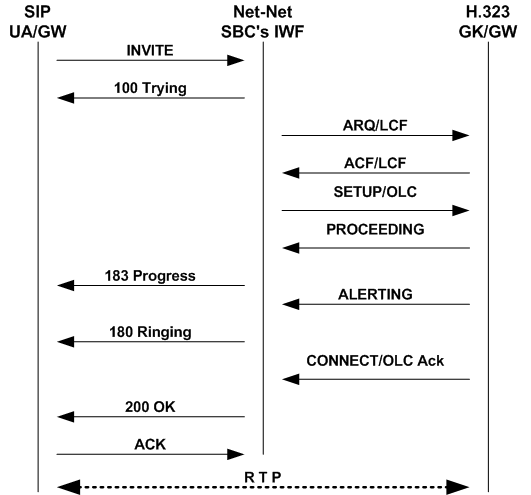SIP to Fast Start H.323
In the following diagram below, a SIP endpoint (such as a UA or a SIP Gateway) initiates a session by sending an INVITE message destined for an H.323 endpoint (a GK or GW). Between these entities, the system is positioned to perform interworking. The Oracle® Enterprise Session Border Controller recognizes that the INVITE message is destined for an H.323 device, and returns a 100 Trying message to the SIP endpoint as it attempts to negotiate the H.323 side of the session. This negotiation starts when the Oracle® Enterprise Session Border Controller initiates the RAS process with the H.323 endpoint by sending either an ARQ or an LRQ, allowing the Oracle® Enterprise Session Border Controller to determine if the H.323 endpoint will accept the session.
Once the H.323 endpoint responds with an ACF or LCF, the Oracle® Enterprise Session Border Controller reissues the SIP INVITE on the H.323 side as an H.225 Setup, which is sent with the OLC. Then the H.323 endpoint responds with Proceeding and Alerting messages (which correspond respectively to SIP 183 Progress and 180 Ringing messages). At that point, the H.323 endpoint sends a Connect message that includes the OpenLogicalChannel message (OLC), announcing the logical channel for media flows has been set up. The Oracle® Enterprise Session Border Controller converts the H.323 OLC to a SIP 200 OK. After receiving the 200 OK, the SIP endpoint sends an ACK, confirming that the session has been established. Because there is no H.323 equivalent for the SIP ACK, the Oracle® Enterprise Session Border Controller does not generate a corresponding message on the H.323 side. At this point, the session is fully established and RTP flows between the endpoints.




